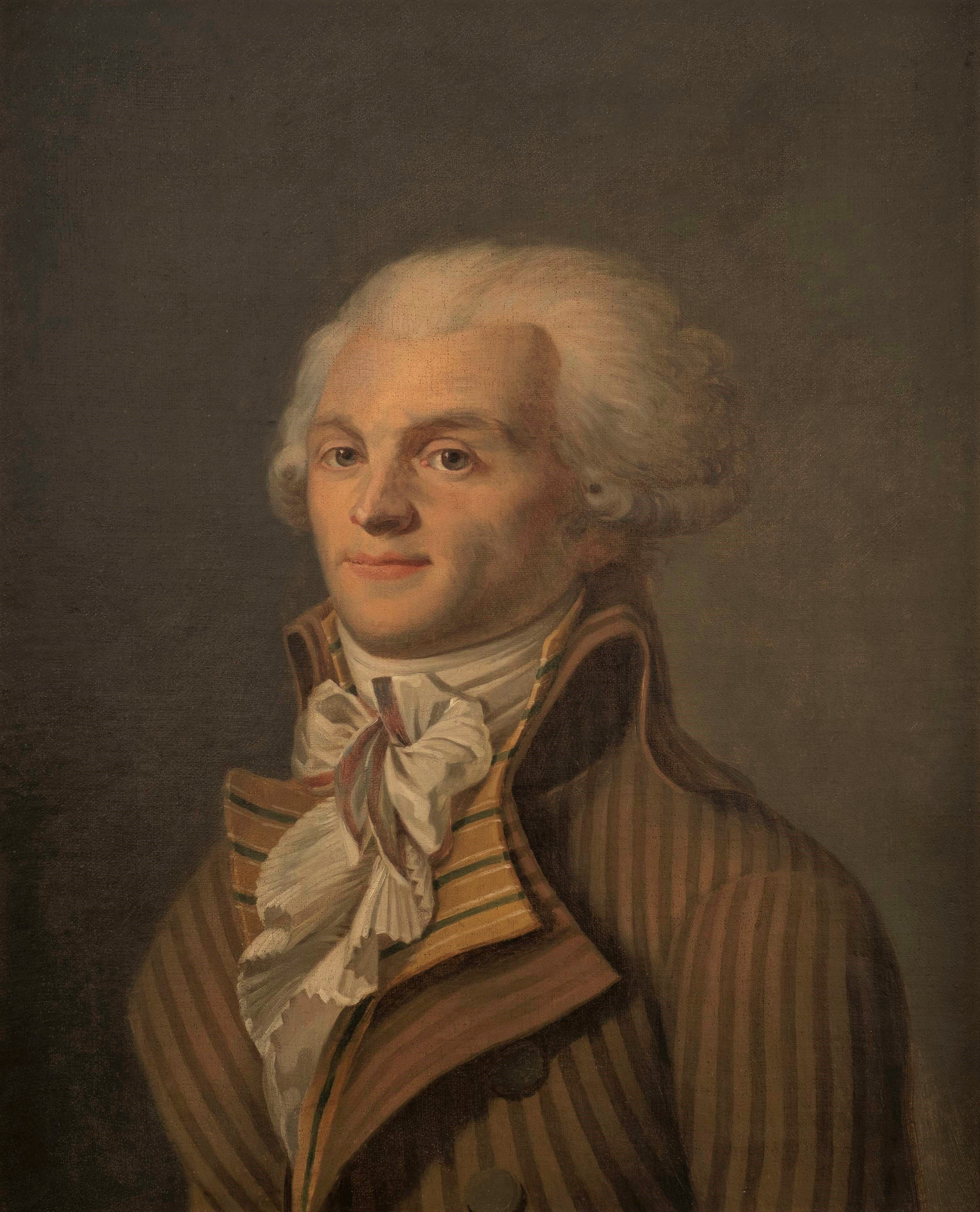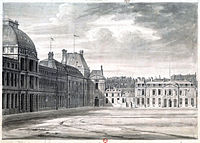
Maximilien Robespierre
Maximilien François Marie Isidore de Robespierre (French: [maksimiljɛ̃ ʁɔbɛspjɛʁ]; 6 May 1758 – 10 Thermidor, Year II 28 July 1794) was a French lawyer and statesman, widely recognized as one of the most influential and controversial figures of the French Revolution. Robespierre fervently campaigned for the voting rights of all men and their unimpeded admission to the National Guard.[1][2][3] Additionally he advocated for the right to petition, the right to bear arms in self-defence, and the abolition of the Atlantic slave trade.[4][5][6] He was a radical Jacobin leader who came to prominence as a member of the Committee of Public Safety, the organ of the First French Republic that was primarily responsible for the Reign of Terror. His legacy has been heavily influenced by his participation in these political persecutions but is notable for his progressive views for the time.
"Robespierre" redirects here. For other uses, see Robespierre (disambiguation).
Maximilien Robespierre
Jacques-Nicolas Billaud-Varenne
Artois
Artois
10 Thermidor, Year II 28 July 1794 (aged 36)
Place de la Révolution, Paris, France
The Mountain (1792–1794)
Jacobin Club (1789–1794)
Éléonore Duplay (rumored)
Lawyer, politician
As one of the prominent members of the Paris Commune, Robespierre was elected as a deputy to the National Convention in early September 1792. He joined the radical Montagnards, a left-wing faction. However, he faced criticism for purportedly trying to establish either a triumvirate or a dictatorship.[7] In April 1793, Robespierre advocated the mobilization of a sans-culotte army aiming at enforcing revolutionary laws and eliminating any counter-revolutionary elements. This call led to the armed Insurrection of 31 May – 2 June 1793. On 27 July he was appointed a member of the Committee of Public Safety.
Robespierre faced growing disillusionment among others due in part to the politically motivated violence advocated by the Montagnards. Increasingly, members of the Convention turned against him, and accusations piled up on 9 Thermidor. Robespierre was arrested and taken to a prison. Approximately 90 individuals, including Robespierre, were executed without trial in the following days, marking the onset of the Thermidorian Reaction.[8]
A figure deeply divisive during his lifetime, Robespierre's views and policies continue to evoke controversy.[9][10][11] Academic and popular discourse persistently engage in debates surrounding his legacy and reputation.[12][13][14]






![On 9 Thermidor Tallien threatened in the Convention to use his dagger if the National Convention would not order the arrest of Robespierre.[459]](http://upload.wikimedia.org/wikipedia/commons/thumb/8/8d/%D0%A2%D0%B0%D0%BB%D1%8C%D0%B5%D0%BD_%D0%BD%D0%B0_%D1%82%D1%80%D0%B8%D0%B1%D1%83%D0%BD%D0%B5_9_%D1%82%D0%B5%D1%80%D0%BC%D0%B8%D0%B4%D0%BE%D1%80%D0%B0.jpg/154px-%D0%A2%D0%B0%D0%BB%D1%8C%D0%B5%D0%BD_%D0%BD%D0%B0_%D1%82%D1%80%D0%B8%D0%B1%D1%83%D0%BD%D0%B5_9_%D1%82%D0%B5%D1%80%D0%BC%D0%B8%D0%B4%D0%BE%D1%80%D0%B0.jpg)
